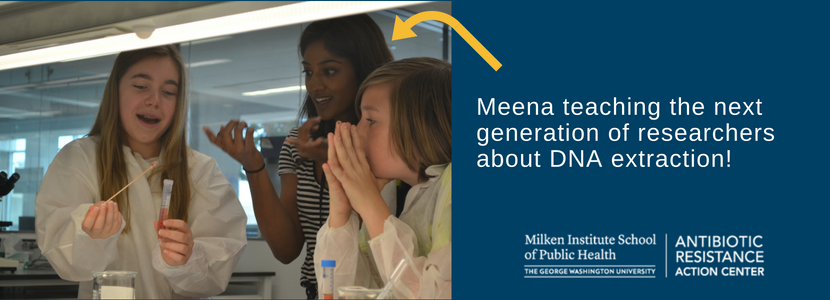Notes from the Lab: DNA Extraction Explained
DNA extraction is one of the first steps to most of the things that we do in our laboratory. We've asked our newest team member, Meena Vanka, to explain what DNA extraction is, how it’s done and why it’s so important to our work.
(And so you feel like you know Meena a little more….She recently completed a Master’s in Biotechnology from Johns Hopkins University and holds a Bachelor of Science degree in Biology from Emory University. After graduating from Emory, Meena taught science in an under-resourced community).
Take it away Meena!
****
DNA extraction is one of the first steps to most of the things that we do in our laboratory.
What is DNA extraction?
DNA extraction is exactly what it sounds like – pulling out the DNA molecules from cells!
Why is it important?
Each bacterial cell has its own unique DNA sequence, just how every human being has a unique DNA sequence. Once we have extracted the DNA from a bacterial cell, we can “read” its sequence to identify the bacterium.
By collecting all the bacteria living in a particular body site and sequencing their DNA, we can learn about the bacterial “community” at that site, observe relationships between different bacterial species and maybe even find ways to push out the dangerous bacteria, like antibiotic-resistant Staphylococcus aureus (a.k.a., Staph).
How is DNA extraction done?
Turns out, this process is harder than it sounds. To sequence the DNA, we need it to be pure. Unfortunately, DNA doesn’t exist all by itself in a cell — it is jumbled together with proteins, RNA, lipids, carbohydrates, and a lot of other cellular “junk.”
So, we start by breaking open the cells, or “lysing” them. We do this by adding chemicals that disrupt the cell membrane. This releases the bacterial DNA from inside the cell so it is freely floating and ready to be captured.
Next, we separate the DNA from all the other cellular material by adding chemicals that bind only to DNA. We then use special tubes to capture the chemicals that are stuck to the DNA. Finally, we wash away the chemicals, leaving just the purified DNA.
DNA extraction is so important that many commercial “kits” have been developed to make the process smooth. These kits help us retrieve as much DNA as possible in its purest form.
As a new research assistant in the lab, I help improve our DNA extraction methods. Once we have determined the best method, I will help us extract DNA from nasal bacteria, so we can try to find non-pathogenic bacteria that can exclude antibiotic-resistant strains of Staph.
Teaching the next generation of scientists about DNA extraction
We recently had the opportunity to teach Montessori students how to extract DNA from strawberries and their own saliva! We hope these bright minds will go on to improve the DNA extraction process and the field of microbiology in the future!



